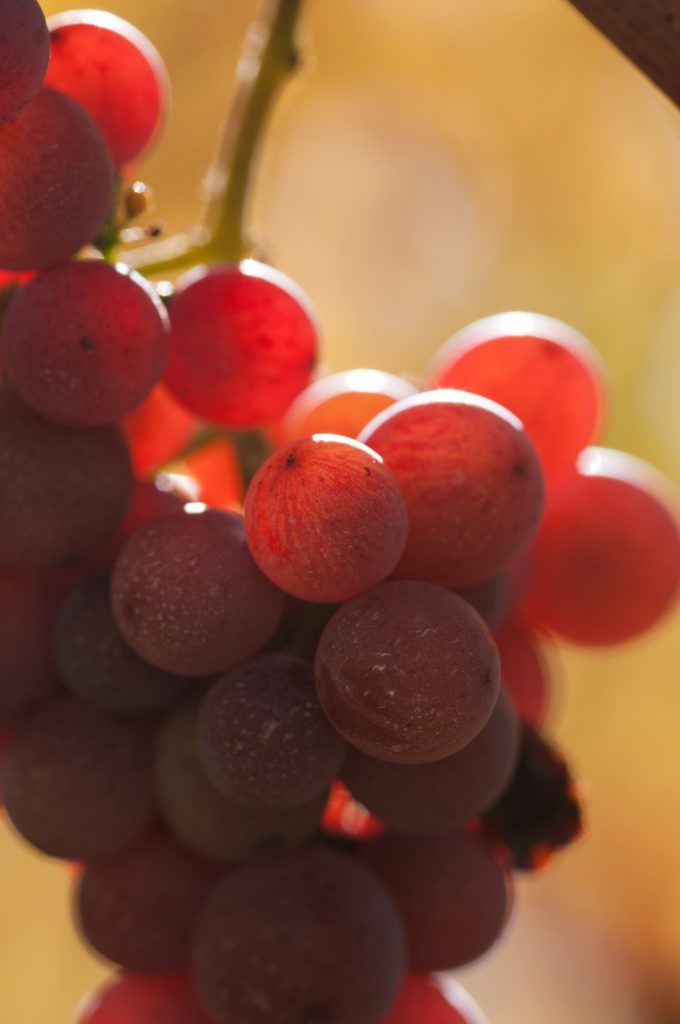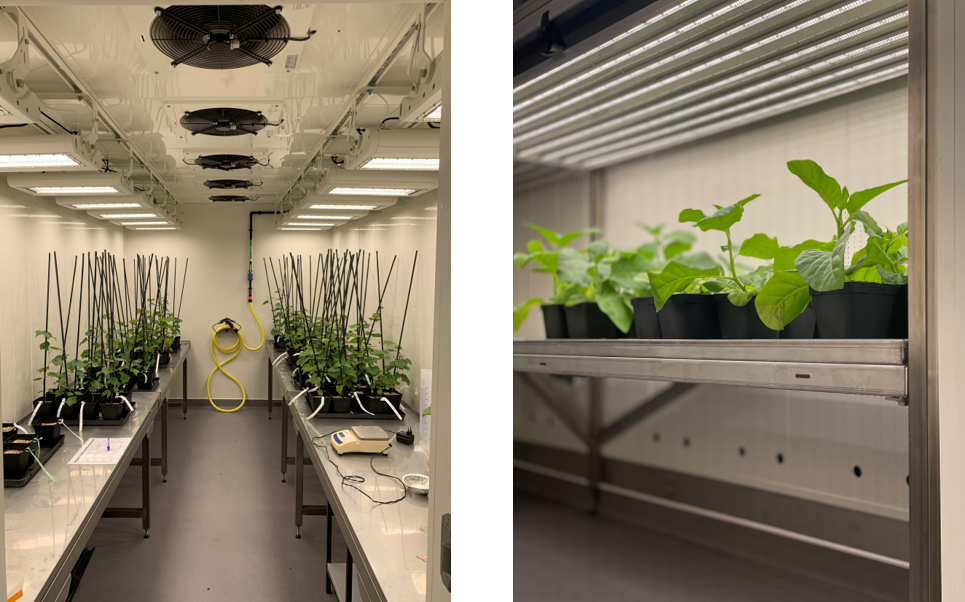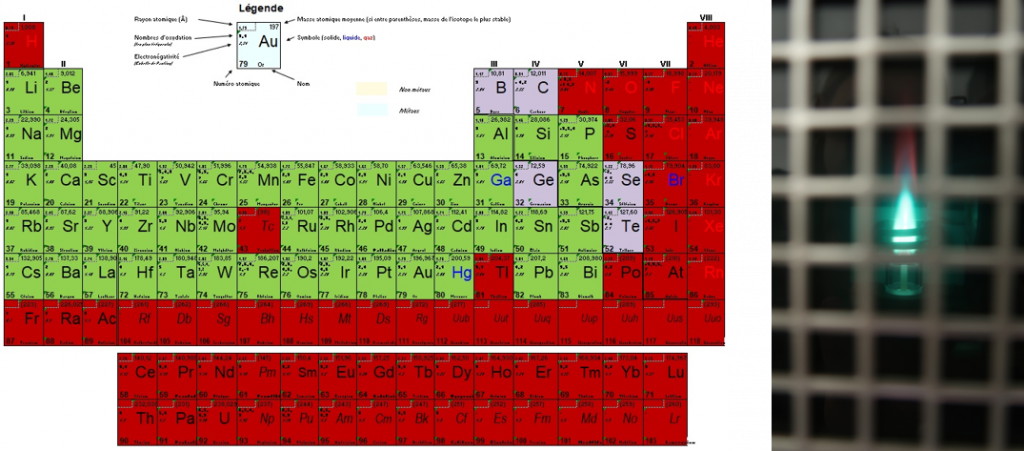Platform

Vegetal Innovation Platform (PIV)
The PIV of the Vine, Biotechnologies and Environment Laboratory was created in 2021. This platform is an innovative experimentation tool for the scientific and agricultural communities, offering support for scientific collaborations.
The platform’s culture chambers recreate optimal plant growth conditions in a level 2 containment environment. This makes it possible to study the response of plants to variations in climatic factors, or their response to phytopathological organisms.
Production and cultivation will be adapted to your needs and expectations: substrates, watering, environmental conditions, etc. As cultivation conditions are finely controlled, the chambers are highly reproducible.
Associated equipment:
Three independent Cold and Measurement culture chambers with a total usable surface area of approximately 20m2.
- Two chambers offer a surface area of 5m2 each, spread over 4 tables.
- The third has a usable surface area of 10m2 spread over two floors and 8 culture tables.
Technical data:
- The air temperature can be set between 18 and 30°C. The temperature is uniform throughout the entire volume of the culture chamber, with a precision of less than 1°C, whether or not the culture is illuminated. It can also be modulated according to programmed time slots.
- The relative humidity of the air can be set at a value between 40 and 90 % with a precision of less than 5% RH.
- Illumination of the chambers is provided by spotlights or LED track lighting, whose spectrum approximates sunlight, thus promoting photosynthetic processes. The intensity of the light sources is variable and programmable, to reproduce the alternation of day and night, as well as dawn and dusk.

Photosynthetic processes, particularly carbon and water assimilation and fluorescence, are strongly influenced by environmental and biological factors. Relative comparisons of certain photosynthetic parameters can therefore reveal different types of biotic or abiotic stress.
These processes are evaluated using a device that measures the flow of water and carbon dioxide between plants and the atmosphere at leaf level, using infrared gas analysers. It also enables independent or simultaneous measurements of chlorophyll fluorescence.
Associated equipment: LI-6800 – LICOR Biosciences
- Clear-top Chamber, maximum leaf surface: 9cm2 combined or not with a light source,
- Large Leaf and Needle Chamber, maximum leaf area: 36 cm2 with or without light source,
- Multiphase Flash Fluorometer, leaf area: 2 or 6 cm2,
- Portable system: harness and tripod.
Technical data:
All environmental parameters can be set for measurement:
- Measurement chamber humidity can be set from 0 to 90%,
- Chamber temperature can be set within 10°C of ambient temperature,
- CO2 concentration can be varied from 0 to 2000ppm (air concentration is around 400 ppm),
- Actinic light (wavelength range 400-700 nm for photosynthesis), measured in µmol of photons per m2 per second, from each source can reach a value of 2000 µmol.m-2.s-1, equivalent to the amount of light received by a plant in full sunlight. The light spectrum of the sources can also be modified to modulate the intensity of the blue or red color, which are essential components in photosynthetic processes. As for the fluorometer, it enables higher values to be reached during measurements, thus promoting reliable responses irrespective of species or plant growth history.

Chemical elements – often essential, sometimes toxic – are the basis of life’s chemistry.
Inductively Coupled Plasma Atomic Emission Spectrometry (ICPE-AES) is an analytical technique for measuring a large number of chemical elements that may be involved in plant metabolism or, in the case of Trace Metal Elements (TMEs), may be the cause of physiological disorders due to environmental contamination (soil, water, etc.).
Equipped with an Ultima radial spectrometer from Jobin-Yvon (HORIBA), a large number of chemical elements can be measured sequentially in concentration ranges from parts per trillion (µg/kg) to percent (g/kg), depending on the element and the method used.
Depending on the matrix to be analyzed (liquid, soil, plant material, etc.), sample mineralization may be required to break down the molecules and access the chemical elements of interest. For this purpose, we have a microwave digestion unit capable of digesting ten samples simultaneously.
Associated equipment and technical specifications: ICP -AES ULTIMA Jobin-Yvon
- Radial Aiming,
- Sequential monochromator,
- Borosilicate glass or Teflon torch,
- Different nebulizer types: concentric, tangential.
Elements that can be analyzed according to your needs:
- In green: elements that can be dosed easily,
- In grey: elements that can be dosed using special devices (hydride generator, etc.) or special analytical conditions,
- In red: elements that cannot be dosed because their emission wavelength is too short (< 190nm).

Geographic Information Systems (GIS) are software tools for storing, analysing and representing geographic data. In agriculture, the importance of GIS lies in their ability to integrate different types of spatialized data, such as topography, climatic data, temporal evolution and geolocalized data, the analysis of which is an aid to crop management.
Specialized in viticulture for phytosanitary and phenological monitoring, we can also provide support for other types of crops, depending on the nature of the project.
Associated equipment and technical specifications:
- IP65-hardened 10″ touchscreen tablets,
- Global Navigation Satellite System chipset operating with GPS and GLONASS data,
- Mapping software compatible with numerous GIS formats (tab, shp, gpx, kml, etc.).

The platform is equipped with an ultra-high-performance liquid chromatography (UHPLC) system for quantifying non-volatile organic substances in various matrices, based on analytical standards. Depending on the molecules to be assayed and the samples to be studied, preparation prior to the assay is carried out using freeze-drying or extraction techniques (solid-liquid, liquid-liquid, SPE, etc.). A wide range of metabolites such as organic acids, pesticides, hormones, etc. can thus be assayed. The sensitivity and resolution of the instrument is enhanced by the presence of a single quadrupole mass detector.
Equipment and technical specifications: Agilent Technologies
- 1290 Infinity II Flexible pump (G7104A),
- Autosampler (G7129B),
- DAD detector (G7117B): spectral range from 190 to 640 nm and Max Light 60 mm optical path chamber,
- Fluorescence detector (G7121B): optimum spectrum from 200 to 600 nm,
- MSD IQ mass detector (G6160A): electrospray (ESI) ionization source in positive and/or negative mode. Mass range from 2 to 1450 m/z.

The platform includes a wide range of equipment for the study of molecular mechanisms. With expertise in the extraction of nucleic acids from simple and complex matrices, the platform is able to monitor the expression of genes of interest in different tissues, or to screen for biological markers using conventional or real-time PCR techniques.
Equipment and technical specifications:
- Thermal cyclers: Bio-Rad C1000 Touch + 96-well block or 2 x 48-well block, Bio-Rad T100,
- qPCR instruments: CFX DUET 2 channels (FAM/SYBR Green), CFX 96 5 channels + FRET,
- Thermofisher Nanodrop One,
- Electrophoresis,
- Bio-Rad Chemidoc.

The platform is able to carry out a variety of culture or comparison tests on solid agar media or in liquid cultures. It is thus possible to study the effect of various molecules or biocontrol agents on pathogens by carrying out growth kinetics. These tests can be complemented by molecular biology and/or biochemistry techniques to analyse the molecular players involved.
Equipment and technical specifications:
- Thermostated incubators – Thermofisher,
- Laminar flow hoods – Faster,
- Type II microbiological safety cabinet – Faster.

Designing and managing scientific and technical projects
From a simple question to putting it into practice, we’re always available to talk with you.
Team members:
- Romain PIERRON, PhD Associate professor in Plant Physiology, Scientific Leader,
- Yann LEVA, Design Engineer in Biological Techniques,
- Célia PERRIN, Research Engineer in molecular biology, biochemistry and microbiology,
- Virginie WETTA, Assistant Engineer in plant experimentation and production.
We can be reached on +33 (0)3 89 20 31 22 and at piv.lvbe@uha.fr

